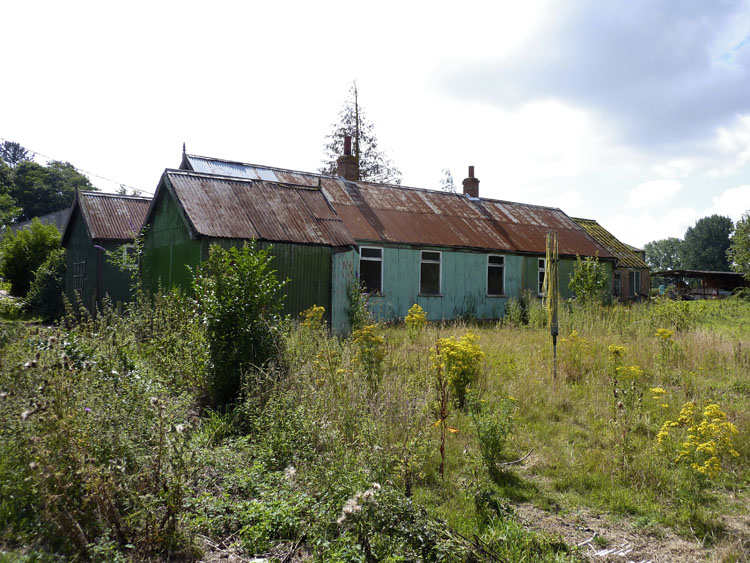
There was a large corrugated iron bungalow at
Gorgate that is said to have been part of a
hospital before being moved here. It was lived in
for many years before demolition. Novus House
stands on the site.
Gorgate Chambers

This building in Gorgate drive has been used for
several very different things built as
a laboratory in about 1948, it became a shoe
factory a year or so later, then a farm office and
it is currently the office of a solicitor.

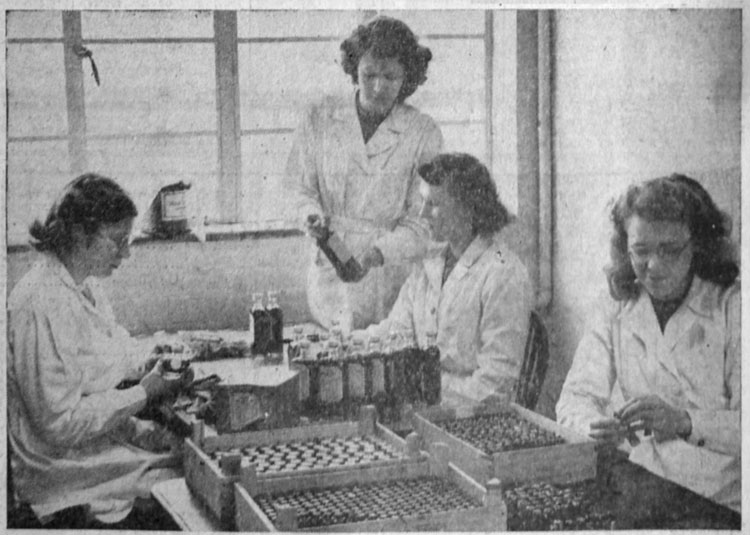
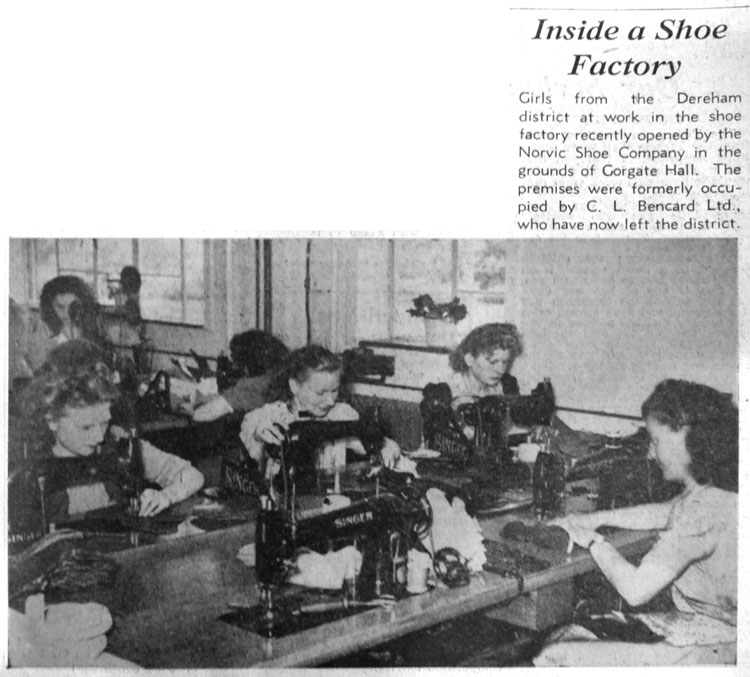
In 1949 Norvic Shoes took over the premises. These
women are sewing leather uppers.
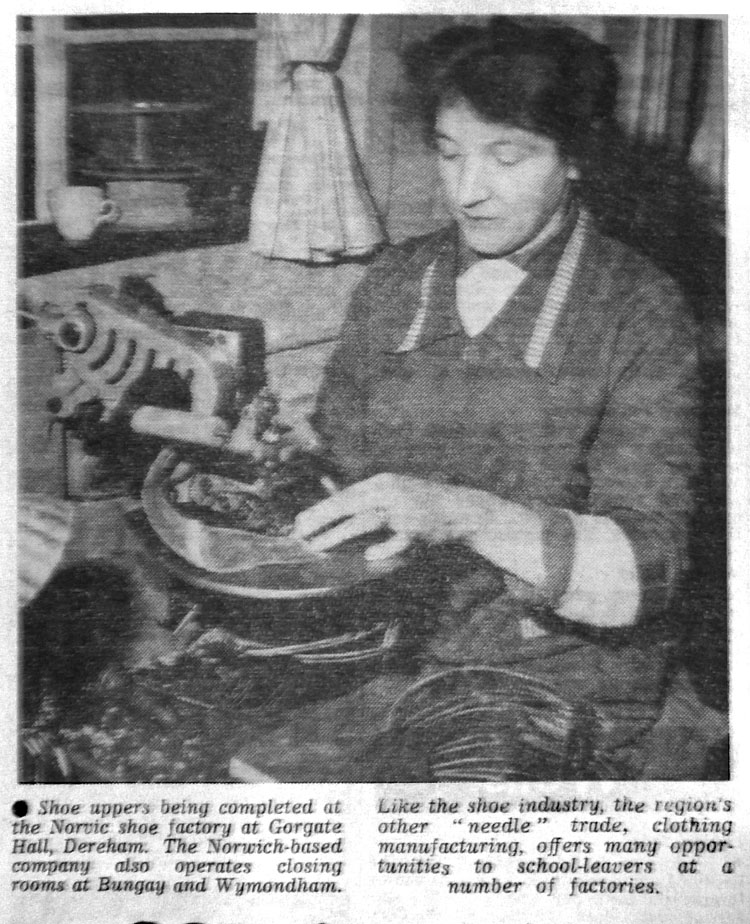
Maureen Webster working a folding machine. Jean
Woods
, who
worked there from 1956, worked on the
next machine. She recalls that the hours were 8am
to 6pm with 1 hour 15 minutes for lunch because
these were the hours of the Norvic factory in
Norwich. Jean cycled to work, first from Fransham,
then from Wendling. In bad weather she would leave
her cycle in Dereham and get the works transport
to Gorgate.
There was a small canteen where workers ate their
packed lunches. It looked out towards the river
where there were 'masses of rats' (possibly
because crusts were thrown out there). One day one
got inside. Jean spotted its tail in a stack of
folding chairs and she went after it while
everyone else backed away. (They don't make
them like Jean anymore!)
The lunch hour was so long with nothing to do that
they often walked to the Gravel Pit pub in Beetley
for a shandy.
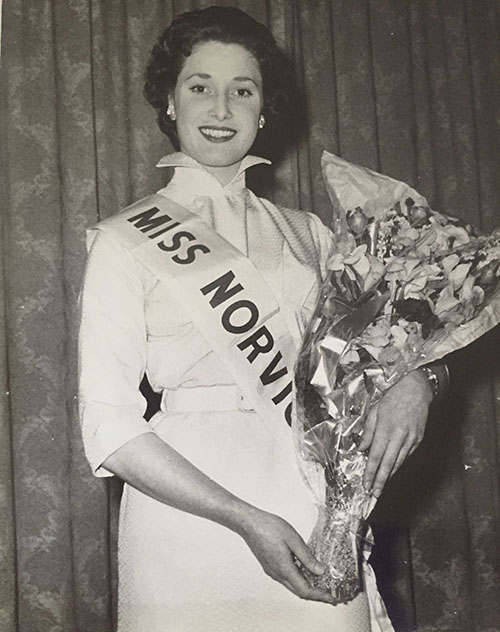
Sheila Willis worked as a
skiver (skiving
is thinning the edges of the
leather
where a join is to be made) at
the Hoe
factory in the 1950s. She won
the Miss
Norvic competition and
subsequently
became a fashion model.
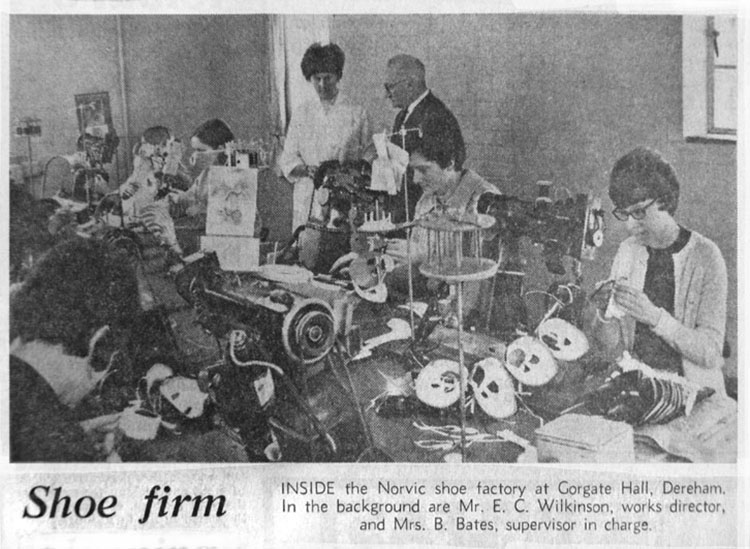
The supervisor, Mrs Betty Bates, lived in the
cottages near Gorgate Hall.

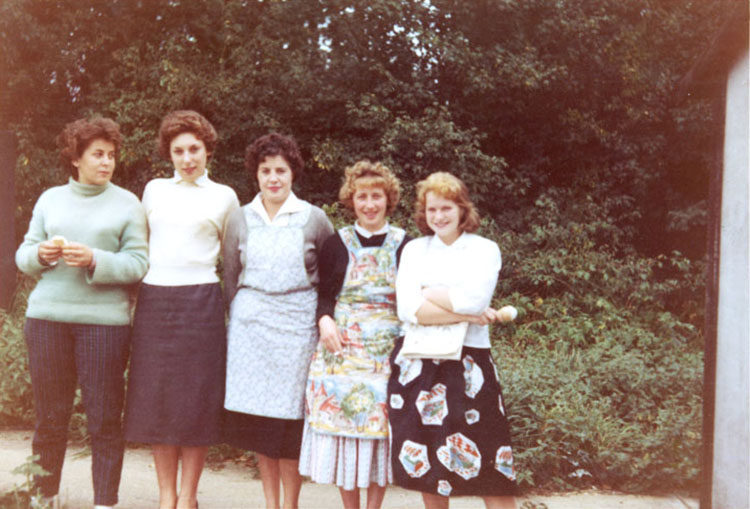
Shoe workers enjoying icecreams in 1959 during
their break. Jean Wright, Cynthia Eglen, Jean
Russell, Sheila Walton
and
unknown.

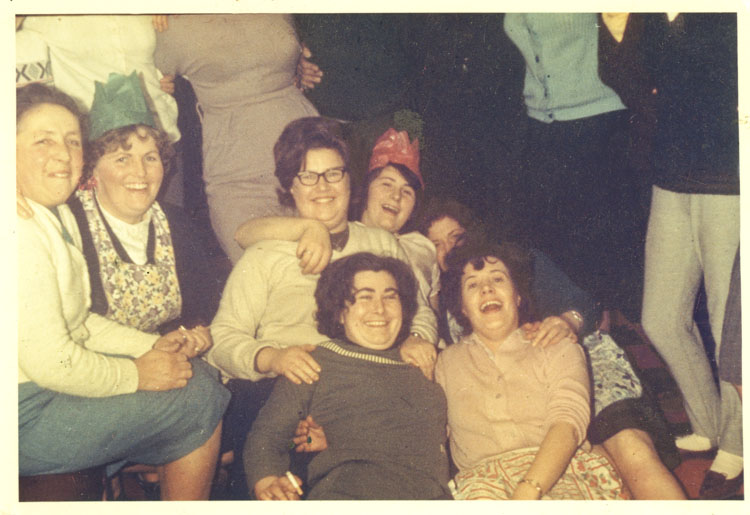
Christmas party, 1963. Heather Hudson (centre,
with glasses) enjoying the fun. Jean Woods recalls
that the women would put their hair in rollers at
lunchtime ready for the evening if you kept your
headscarf on, the supervisor didn't notice.
When the shoe factory closed, the building became
the offices of Mid Norfolk Farmers.